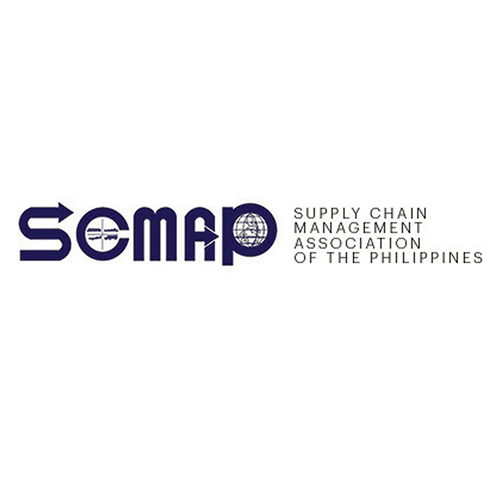An easy way to explain the importance of smooth-flowing supply chains is to talk about what used to be available in stores, but now isn’t.
Take McDonald’s. It’s frustrating, I know, to not be able to order French fries in a size other than small, as has been the case in the past couple of months. They attribute it to a “global freight crisis”. It seems they import their potatoes from outside of the Philippines; I assume it’s a global standard for their fries to be made of a particular type of spud, so a straight swap cannot be made.
They’re not the only restaurant chain having troubles with their supplies. Mary Grace Cafe—yes, the “tita” destination—is also contending with a shortage of its signature ensaymada, which they also attribute to “global supply issues”. Just a few weeks back, the popular Los Angeles-based donut shop Randy’s Donuts opened a branch in Taguig, only to announce a temporary closure due to a shortage of supplies.
These stories are just the tip of the iceberg, so to speak, as the global supply chain crisis—which picked up steam alongside the COVID-19 pandemic—continues to take hold. We first saw the story through the lens of a shortage of semiconductors (affecting the supplies of everything from laptops to appliances) and delays in deliveries due to personnel being affected by lockdowns. There were short- and medium-term impacts, but we have managed for the most part. But, arguably, the worst is yet to come, as the cumulative impacts of uneven economic reopenings, increasing prices and continuing uncertainty threaten our food security.
Sure, it isn’t just because of the pandemic. There’s a lot of geopolitics at play, primarily Russia’s continuing aggression against Ukraine. As western countries pursue more economic responses to force Moscow to change its position—as I write this, the European Union has approved terms for an oil embargo—global prices continue to fluctuate upward. Oil prices, of course, haven’t recovered from the heights we saw last February, and that impacts global transport costs, a particularly inescapable pain point in our interconnected economies.
As prices continue to rise, other major producing countries are moving to secure domestic supplies at the expense of other countries. Take India, who announced a fortnight ago that it will ban wheat exports, despite earlier promises that it will help ease supply chain concerns brought forth by Ukrainian and Russian wheat being tied up in the war. It was then followed by a ban on sugar exports, and analysts believe a ban on rice exports is next. Imagine the disruption it will cause on global markets.
Similarly, Indonesia temporarily banned palm oil exports, seeking to lower domestic prices (although the results have been mixed). Just last week, Malaysia put in place a ban on chicken exports, spooking in particular Singapore, which relies heavily on imports for its food. Cue images of long queues at chicken rice hawker stalls the day before it all took effect. Their reason, also, is to secure prices and supplies in their domestic markets, battered by increasing poultry feed costs and a shortage of farm personnel.
Cue the Philippines. While we produce some of our food, we remain susceptible to global disruptions. Last month the Department of Agriculture warned of a “looming food crisis” due to increasing fuel and food costs, as well as having fewer options for imports. Yes, government figures state that we are self-sufficient in some agricultural commodities such as poultry and seafood, but, for example, we imported 15% of our total rice requirements in 2020. Even now there is talk of importing fish to stabilize prices—although the DA warns prices will spike in the second half of this year. It will definitely impact the quality of life of many Filipinos, especially those in the lower and middle classes.
Efforts among the public and private sectors to address the ongoing woes of the agriculture sector are plentiful and well-documented. (For our part, SCMAP is involved through the development of the DeliverE platform and its work with the Pilipinas Kontra Gutom program, both of which have interventions targeting farmer access to markets.) The DA itself has its Plant, Plant, Plant program which aims to boost food production. But what can we do in the short term?
Whoever president-elect Bongbong Marcos hands the agriculture portfolio to will be critical. They have to ensure the long-term growth and viability of our agriculture sector—including continued investment in transport and logistics infrastructure—and, more immediately, the stability of food prices. Apart from allowing food imports, perhaps we can consider providing subsidies and other forms of support to farmers who have to carry the burden of high costs of feed, fertilizer and transport. But this may be easier said than done, considering the conversation around increasing our tax base to ensure we can pay off loans we took out in the name of pandemic response. In any case, we might have to get used to not seeing food items other than McDonald’s large fries on our menus and shelves—and it won’t be purely down to logistics.
SCC22 returns this September: The most prestigious event in Philippine supply chain returns in person and online on September 22-23. This year’s SCMAP Supply Chain Conference promises to look at the issues affecting our work as one supply chain moving forward. More details will be revealed in the coming days at scmap.org.
Henrik Batallones is the marketing and communications director of SCMAP, and editor-in-chief of its official publication, Supply Chain Philippines. More information about SCMAP is available at scmap.org.





